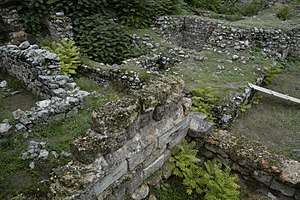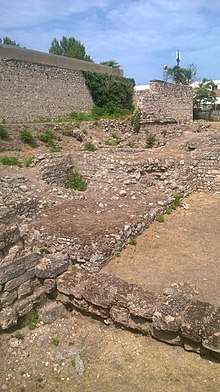Cadmea
The Cadmea, or Cadmeia (Greek: Καδμεία, Kadmía), was the citadel of ancient Thebes, Greece, which was named after Cadmus, the legendary founder of Thebes. The area is thought to have been settled since at least the early Bronze Age, although the history of settlement can only be reliably dated from the late Mycenaean period (c. 1400 BC).

Classical period


In the classical and the early Hellenistic periods, the Cadmea served a similar purpose to the Acropolis of Athens; many public buildings were situated there, and the assemblies of Thebes and the Boeotian Confederacy are thought to have met there. During the Spartan (382–379/2 BC) and Macedonian occupations of Thebes, foreign garrisons were stationed on the Cadmea. Phoebidas was the general responsible for the unauthorized seizure of the citadel of Cadmea in 382 BC, in violation of the Peace of Antalcidas in place then.
Destruction and rebuilding
The Cadmea was destroyed in 335 BC by Alexander the Great, who razed the city of Thebes as a warning to other Greek cities contemplating revolt against his rule. Cassander, the Macedonian general who inherited the Greek territorial possessions of Alexander after his death, rebuilt the Cadmea in 316 BC.
Alternate meaning of cadmea
Cadmea is also an ancient name for calamine or zinc carbonate. Combined with copper, it was used in ancient times for the production of brass, as mentioned, for instance, by the Roman author, Pliny the Elder. The element, cadmium (Cd), was, in 1817, first isolated from an impurity in calamine; hence, the name, cadmium.